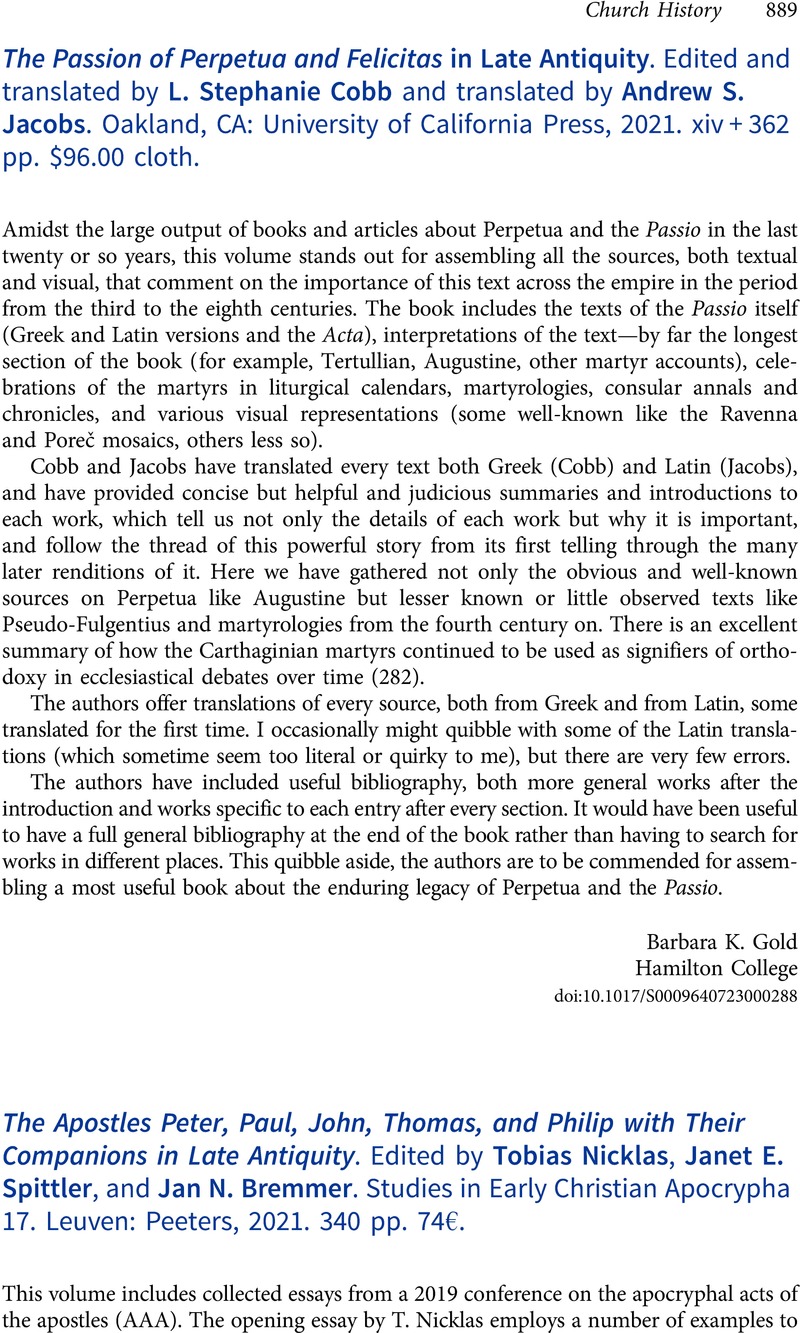No CrossRef data available.
Article contents
The Apostles Peter, Paul, John, Thomas, and Philip with Their Companions in Late Antiquity. Edited by Tobias Nicklas, Janet E. Spittler, and Jan N. Bremmer. Studies in Early Christian Apocrypha 17. Leuven: Peeters, 2021. 340 pp. 74€.
Review products
The Apostles Peter, Paul, John, Thomas, and Philip with Their Companions in Late Antiquity. Edited by Tobias Nicklas, Janet E. Spittler, and Jan N. Bremmer. Studies in Early Christian Apocrypha 17. Leuven: Peeters, 2021. 340 pp. 74€.
Published online by Cambridge University Press: 03 May 2023
Abstract
An abstract is not available for this content so a preview has been provided. Please use the Get access link above for information on how to access this content.

- Type
- Book Reviews and Notes
- Information
- Copyright
- Copyright © The Author(s), 2023. Published by Cambridge University Press on behalf of American Society of Church History


